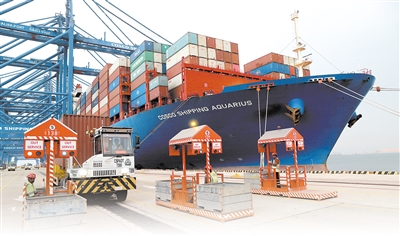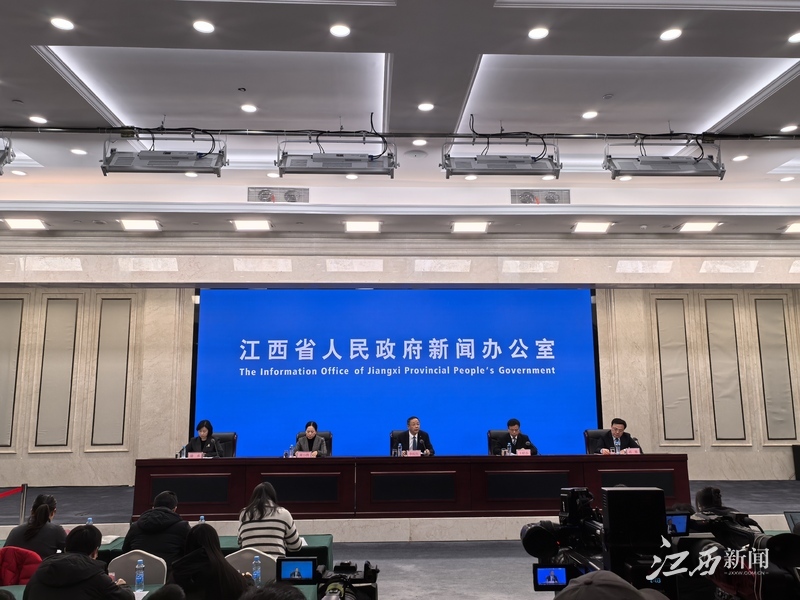More Than "Shenzhen Speed"! Why Does Xinjiang Take Over And Become The Next Development Trend?
More Than "Shenzhen Speed"! Why Does Xinjiang Take Over And Become The Next Development Trend?
In the magnificent picture of China's regional development, every important rise is not accidental, but the result of the joint action of historical laws, national strategies and opportunities of the times. From Shenzhen to Xinjiang, two regions with different eras and geographical coordinates have very different development paths.
In the magnificent picture of China's regional development, every important rise is not accidental, but the result of the joint action of historical laws, national strategies and opportunities of the times. From Shenzhen to Xinjiang, two regions with different eras and geographical coordinates, although the development paths are very different, they deeply confirm the historical logic of "the direction of the national strategy and the location of regional opportunities", and also reflect the development context of China's development from the opening of maritime power to the revival of land power.
Scenery of Yili area in Xinjiang
1. Shenzhen’s rise: Historical choices in the early stages of reform and opening up and the microcosm of the era of maritime power
Looking back at history, Shenzhen’s rise is an inevitable choice for China to bid farewell to closure and embrace globalization. Since the Ming and Qing dynasties, China has long faced a game of "maritime ban" and "openness", and the humiliating history of modern China has made maritime security and coastal opening an important proposition for national development. In the early stage of reform and opening up, China, which is in decay, urgently needs to break the closed pattern and activate development momentum with the help of external capital and technology. Coastal areas have become historical priority options with their geographical advantages of being adjacent to the international market.
In 1980, Shenzhen was established as a special economic zone. Behind this decision was profound historical considerations: on the one hand, Shenzhen was adjacent to Hong Kong, an international free port, which facilitated the transfer of foreign investment and technology and solved the dilemma of isolation from the global market at that time; on the other hand, as a "test field", Shenzhen undertakes the historical mission of exploring the market economic system and accumulates experience for national reforms by "feeling the stones". This strategic positioning has given Shenzhen special policies such as tax reduction and exemption, land independent development, making it a "window" and "benchmark" for reform and opening up.
From a historical perspective, Shenzhen’s success is in line with the wave of global industrial transfer. Since the 1980s, manufacturing industries in developed countries have moved to Asia with lower costs. Shenzhen has quickly become the "world factory" with its port advantages (the annual throughput of Yantian Port and Shekou Port has grown rapidly), cheap labor and policy dividends. Countless foreign-invested enterprises and local factories gather here, and industrial clusters such as electronics and textiles rose, and GDP jumped from 196 million yuan in 1979 to more than 3 trillion yuan in 2024, creating the "Shenzhen speed" of "three days and one floor". This rise is not only an economic miracle, but also marks China's transformation from a traditional development model dominated by land power to a modern path of opening up maritime power, which has profoundly changed the spatial pattern of China's economy.
2. The rise of Xinjiang: the contemporary continuation of historical strategies and the era of revival of mainland power is inevitable
If Shenzhen’s rise is the answer to China in the era of maritime power, then Xinjiang’s development carries the mission of continuing historical strategies and reviving mainland power. In the long history of China, "prosperous times to marry the border" is a clear context: the "Silk Road" in the Han and Tang dynasties made Xinjiang a hub for the intersection of Eastern and Western civilizations, and the prosperity of Chang'an was closely linked to the smooth flow of the Western Regions; the Kangxi and Qianlong periods of the Qing Dynasty made Xinjiang an important barrier to national stability through consolidation of borders and development of settlements. History has repeatedly proved that Xinjiang's stability and development have always been an important symbol of national strength.
Entering a new era, the proposal of the "Belt and Road" initiative has brought Xinjiang's historical status to life. As the core area of the ancient Silk Road, Xinjiang is now the core area of the "Silk Road Economic Belt". This positioning is not accidental, but a continuation and sublimation of the historical context. From Zhang Qian of the Han Dynasty's "driving the Western Regions" to the contemporary China-Europe freight trains travel through Europe and Asia, from ancient stations to modern cross-border railways, Xinjiang has always been a key node for China to connect with Central Asia, West Asia and even Europe. In 2023, the China-Europe freight trains entering and leaving Xinjiang exceeded 8,000, accounting for nearly 30% of the country. This set of data is exactly the echo of history and reality - Xinjiang's status as a land trade hub has been highlighted again after a thousand years.
From the perspective of resource endowment, Xinjiang's rise also meets the objective needs of historical development. The prosperity of the ancient Silk Road relies on Xinjiang's status as a "transfer station for East and West materials"; today, in the context of deep adjustments to the global energy pattern, Xinjiang, as an important national strategic guarantee base for energy resources, accounts for more than 40% of the country's coal reserves, and the number of new energy (wind power, photovoltaic) can be developed at the forefront of the country. In 2024, the "Xinjiang Power Transmission" reaches 126.4 billion kilowatt-hours, becoming the "ballast stone" to ensure national energy security. This functional upgrade from "material transfer" to "energy guarantee" is the continuation of historical logic in the contemporary era.
3. Climate change: ecological variables and development opportunities from a historical perspective
From a long historical cycle, climate change has always been an important factor affecting regional development. The prosperity of the Silk Road during the Han and Tang Dynasties was closely related to the relatively humid climatic conditions in the Western Regions at that time; while the colder and dry climate in the Ming and Qing Dynasties increased the fragility of the ecological environment in the northwest to a certain extent. Today, the "warm and humidification" trend presented by Xinjiang is becoming a new ecological variable from the historical perspective.
In the past 30 years, the average annual precipitation in Xinjiang has increased at a rate of 15.5 mm per 10 years. The precipitation around the Tarim Basin is 20%-30%, and the vegetation coverage rate at the edge of the Taklamakan Desert has increased by 5%-8% in the past 10 years. Although this change has not changed the basic pattern of arid and semi-arid Xinjiang, it echoes the ecological characteristics of the "warm and wet period" in a historical dimension. For agriculture, the increase in caloric resources has extended the growth cycle of crops. In 2024, Xinjiang's grain yield jumped first in the country for the first time, and the total cotton output accounts for 90% of the country, continuing the potential of the Western Regions as a "granary" in history; for ecology, the expansion of local oasis and the storage of water in lakes provide a more favorable foundation for sustainable development, which is in contrast to Shenzhen's development conditions due to humid climate and no significant ecological constraints, but also confirms the historical wisdom of "complying with the laws of nature".
4. Development logic in historical comparison: strategy, endowment and the resonance of the times
Although the rise of Shenzhen and Xinjiang is in different historical stages, it shares similar development logic: the top-level design of the national strategy is the premise, Shenzhen relies on the "special zone policy" of reform and opening up, and Xinjiang relies on the core area positioning of the "Belt and Road", both have gained the inclination of national resources and institutional innovation; the full play of comparative advantages is the key, Shenzhen integrates into globalization with its maritime dividends and location advantages, and Xinjiang deepens regional cooperation with its energy endowment and land transportation hub status; the precise fit of the needs of the times is the driving force, Shenzhen meets the needs of "bringing in" in the early stage of reform and opening up, and Xinjiang responds to the needs of "dual circulation" and energy security in the new era.
From a historical perspective, the development of the two is a microcosm of China's "coastal opening" to "all-region opening". Shenzhen’s success marks China’s opening of a “maritime portal” and achieving docking with the global economy; Xinjiang’s rise means China activates a “maritime portal” and promotes the coordinated development of land and sea power. This pattern of "sea and land" not only conforms to China's basic national conditions as a major land-sea composite country, but also conforms to the law of common prosperity of the "Sea and Land Silk Road" in history.
Conclusion: History is not completed, the future is promising
From Shenzhen to Xinjiang, the story of China's regional development is still being written. Shenzhen’s rise verifies the historical correctness of reform and opening up, while Xinjiang’s potential demonstrates the foresight of the national strategy in the new era. Standing on the shoulders of history, Xinjiang is positioned as the "core area of the Silk Road Economic Belt", continuing the prosperous genes of the Millennium Silk Road, relying on its energy advantages, land transport hubs and new ecological variables to write its own development legend. As history shows, every regional rise is a resonance between the times and history. The future of Xinjiang will surely leave a brilliant mark in the grand narrative of national development.





